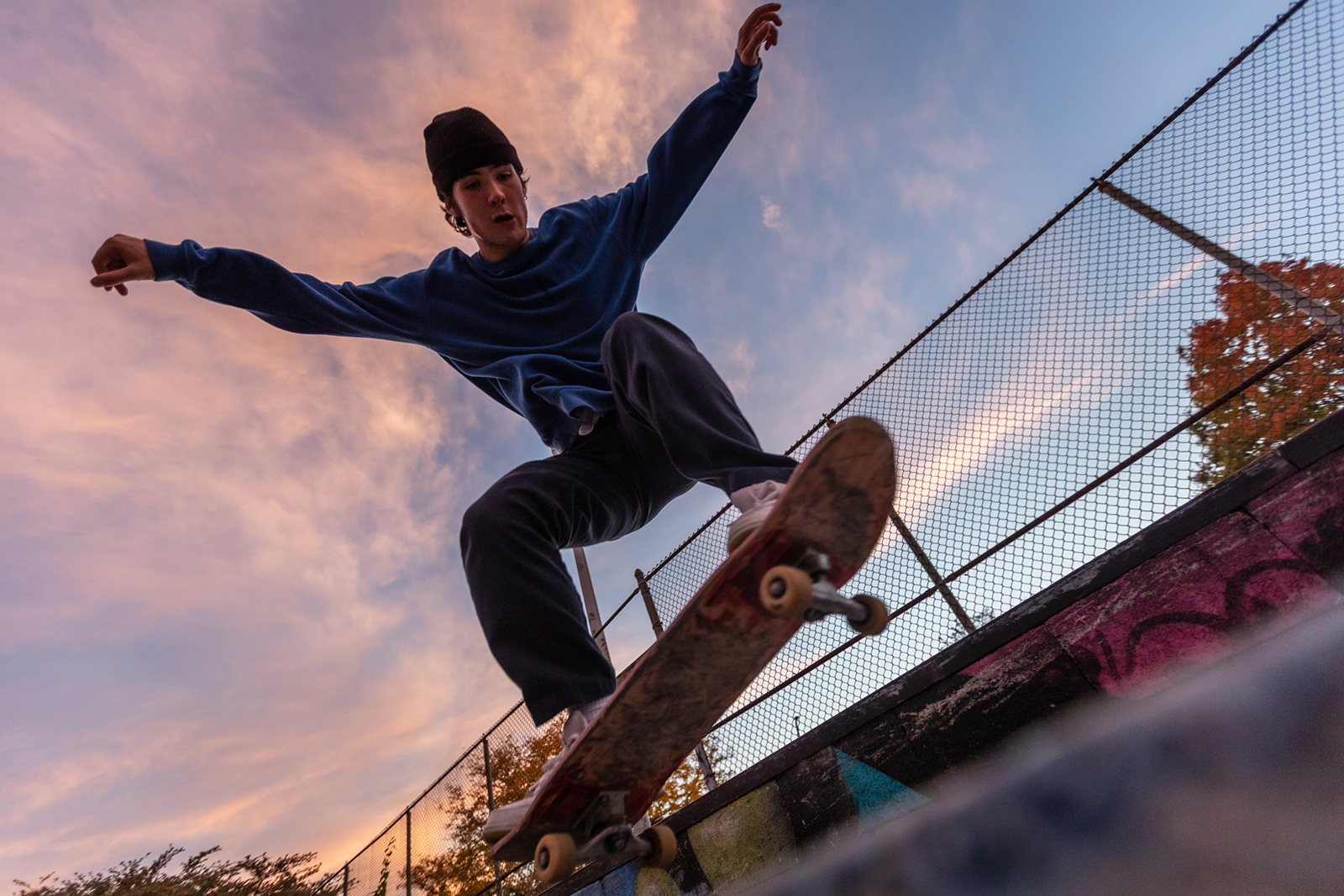
Welcome to The Spot
Known for its craggy ramps, graffiti, and devoted community members, this D.I.Y. skatepark attracts locals and college students looking to ride, roll, jump, and flip.
Words, Photos, and Video By Gavin Liddell · 8.1.2021

Words, Photos, and Video By Gavin Liddell · 8.1.2021
Positioned between an HVAC warehouse and a gas station that doubles as a takeout pizza restaurant, Syracuse’s DIY skatepark, called “The Spot” by locals, exists as a perpetual work in progress. Skateboarders and BMX riders use cement, scrap metal, plywood, trash, and whatever else they find to transform the old tennis courts of Ormond Spencer Park just off Erie Boulevard. Open 24/7 thanks to two street lights that illuminate the space at night, it features cement ramps and ledges riddled with cracks and divots after a decade of skateboarding and deterioration from the city’s famously harsh winters (those seeking smooth ground to skate on should head a mile down the road to the East Woods Skate Plaza).
The spray-paint art of local artists and skateboarders cover the craggy ramps and ledges. Those colorful designs also exist in a constant state of flux. Some designs last months; others are painted over a few days after their creation. New features appear and old ones break or fall apart. When something becomes un-skateable, the community finds a new way to skate it or use the rubble and scrap to fill another ramp. The park breathes thanks to that shared tending to the space and the creativity it invites, building a community fueled by more than movement on a strip of wood on wheels.
Unspoken rules and mutual respect guide community members. “With the growing popularity of skateboarding there has been a huge amount of new skateboarders that come down from SU and ESF, most of us are happy to have them,” says Cris Moore, a Spot regular. “Most of the time with college students, there seems to be some unspoken rule that we only hang out within the confines of the skatepark.” Moore emphasizes that that this is not the case. The Spot serves as one of many locations around the city that skateboarders convene at.
Most DIY skateparks have a limit to their longevity due to property laws, insurance risks, and complaints from neighbors. In fact, often skateboarders pour their time and money into building a small park in an abandoned lot only to return to find “No Trespassing” signs, or, even worse, that officials demolished the park overnight. But through effort from local skaters and with cooperation from the city, The Spot has managed to stay alive. Although the city of Syracuse doesn’t directly support the park, it hasn’t destroyed or condemned it either. Originally, Syracuse pushed back against skateboarders. After the first obstacle, a brick ledge, was built, the city locked the gates to the courts. Despite the height of the fence, kids hopped it, and it became a “weird right of passage” and a very “invite/locals only” kind of operation, says Moore. Police officers routinely patrolled the area, ticketing people for skating in the unauthorized courts. But a few skateboarders pushed back and presented a proposal to board members of the Syracuse City Parks. After a long approval process, city officials gifted the space to the skateboarding community.
Today those who frequent The Spot take pride in the structures and the vibe they’ve created. “It is a mix that you could get nowhere else, with skateboarders aged three to sixty, artists, out-of-towners, the homeless, and town crazies,” Moore says. “I think that some of these people would feel like or be treated like outcasts, if this place still functioned as a tennis court.” And those out-of-towners often come from skating meccas such as New York and Los Angeles, but Moore says those visitors often offer praise for the space. For locals, The Spot serves as a meet-up point that often runs late into the night, and those, like Moore, who have been around for years, enjoy supporting newcomers and serving as role models for younger skaters. “The Spot is one of the most welcoming environments I have ever been to,” Moore says.

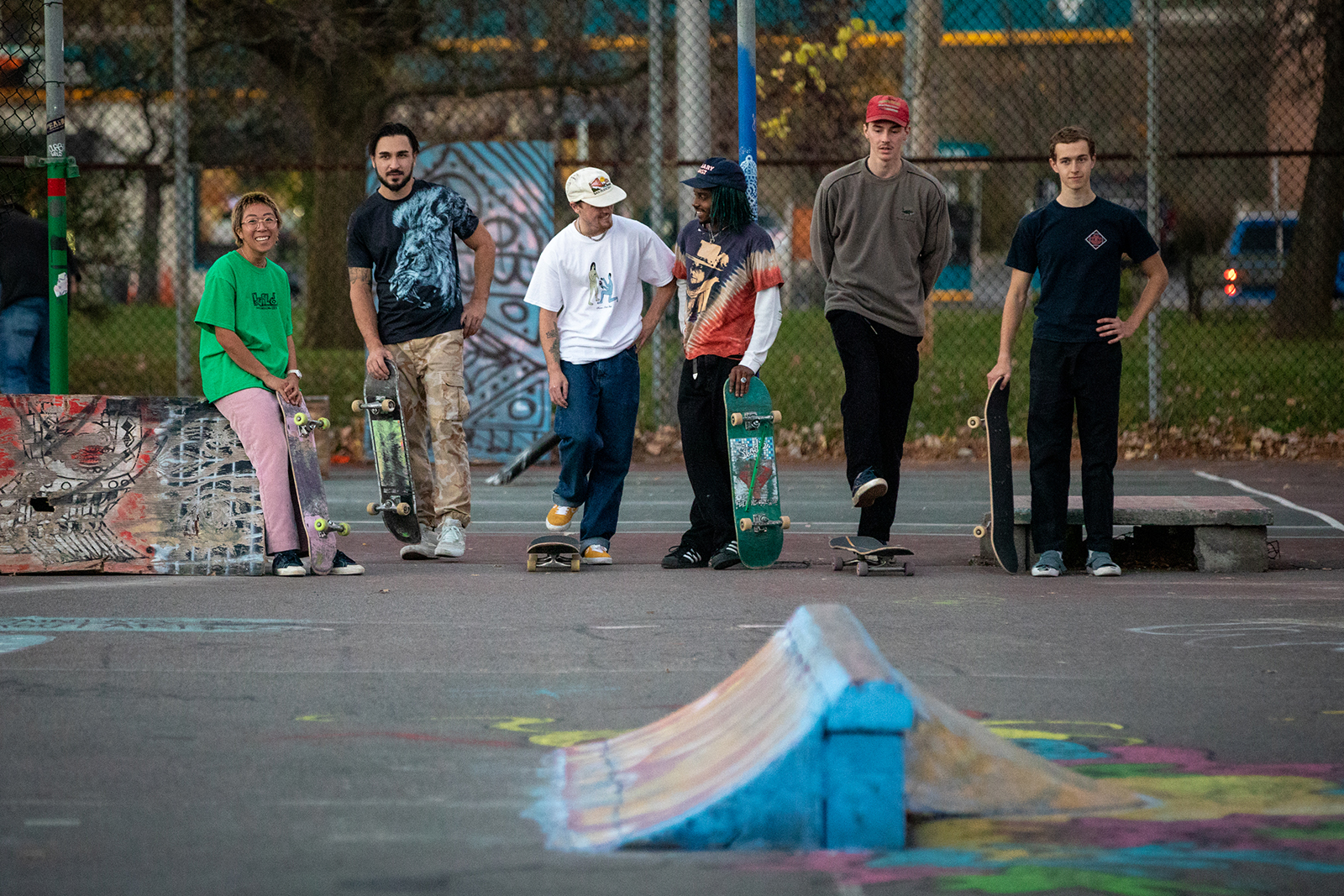
The D.I.Y. skatepark known as "The Spot" was built and is maintained by local skateboarders. Most evenings, the park attracts a variety of skateboarders, artists, bikers, and neighborhood kids. Photo by Gavin Liddell.
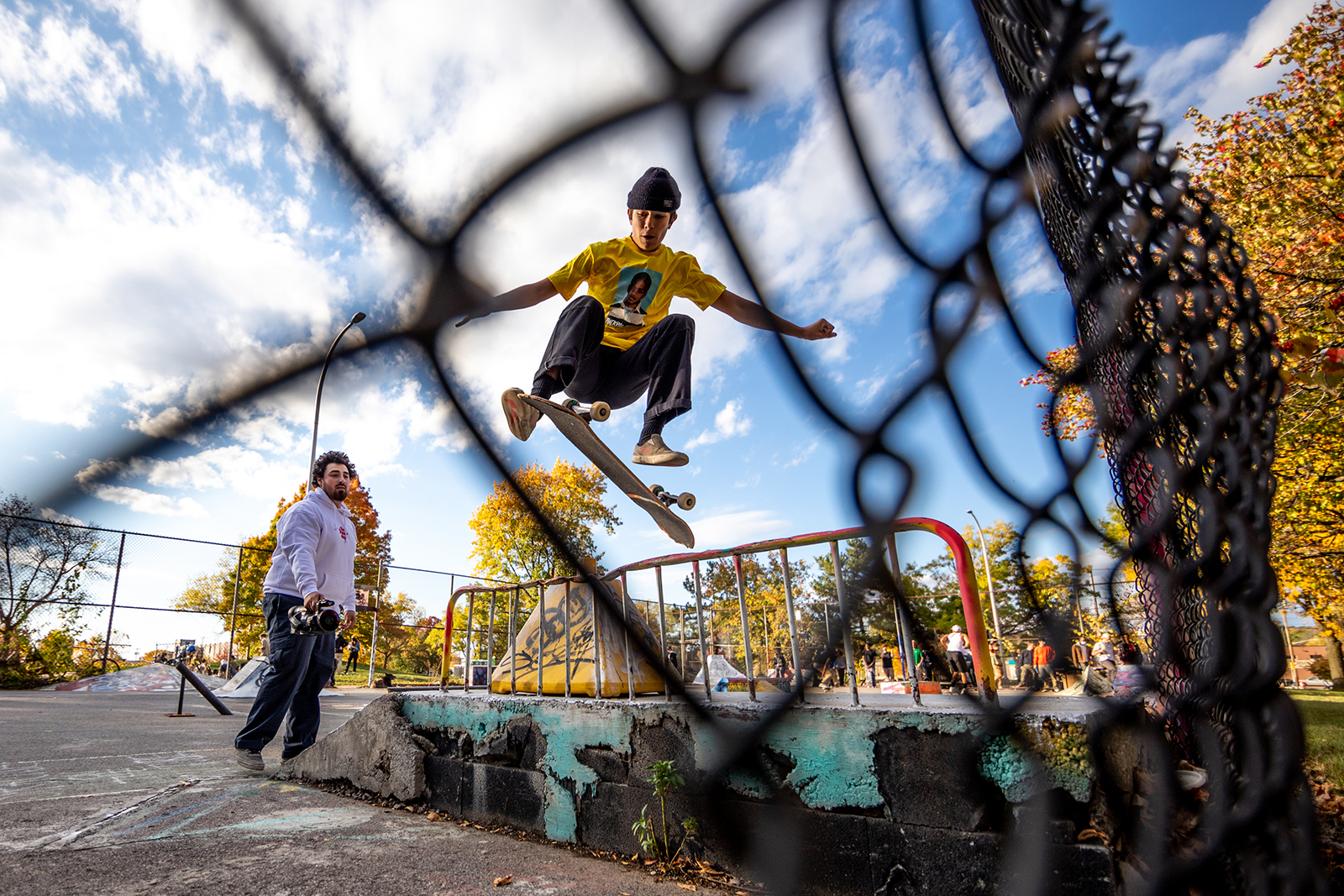
Vigo Mejico attempts a kickflip while John More films on his Sony VX1000. Recently, More and two friends decided to pool the savings to create a small skate shop in downtown Syracuse. Much like The Spot, The Flower Shop skate shop is a DIY in itself and an answer to the limited access of quality local skateboard gear and apparel in Upstate, New York. The shop sits in a downtown, basement showroom. Inside three walls features skateboards, apparel, hats, and stickers stickers. There is no cash register, no credit card machine, and definitely no plastic shopping bags. The items are limited and local, the hours are short (Saturday and Sunday 11 a.m. to 7 p.m.), and the employees are all part-time and also owners. Photo by Gavin Liddell.
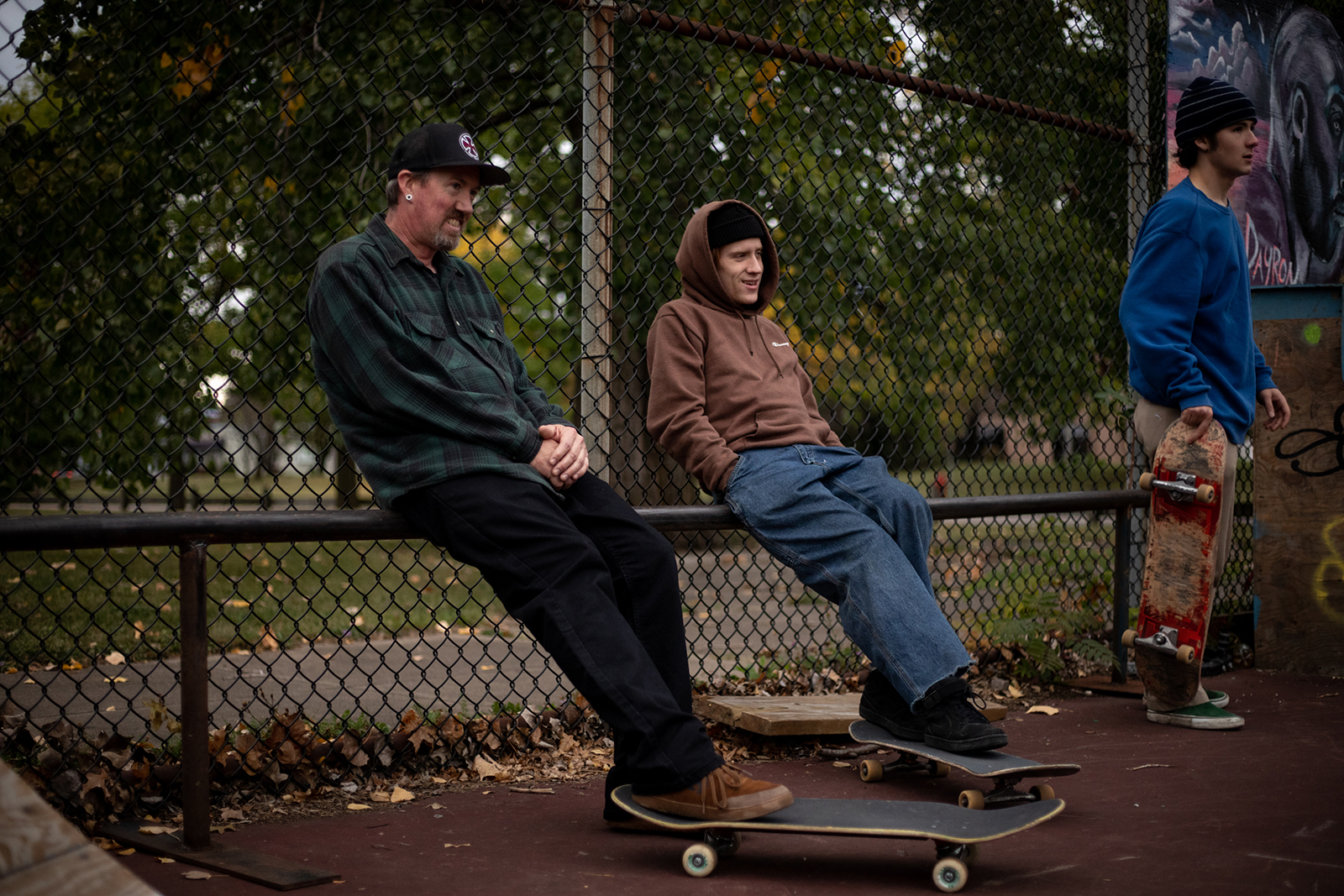
“The Spot is one of the most welcoming environments I have ever been to. It is a mix that you could get nowhere else, with skateboarders age 3 to 60, artists, out of towners, the homeless and town crazies,” says Cris Moore, one of the original Spot skateboarders. Jason Sheehan (left) and Ryan Mills (center) rest on a rail in the tennis court section of The Spot as Brendan Pilewski (right) spots his line. Photo by Gavin Liddell.
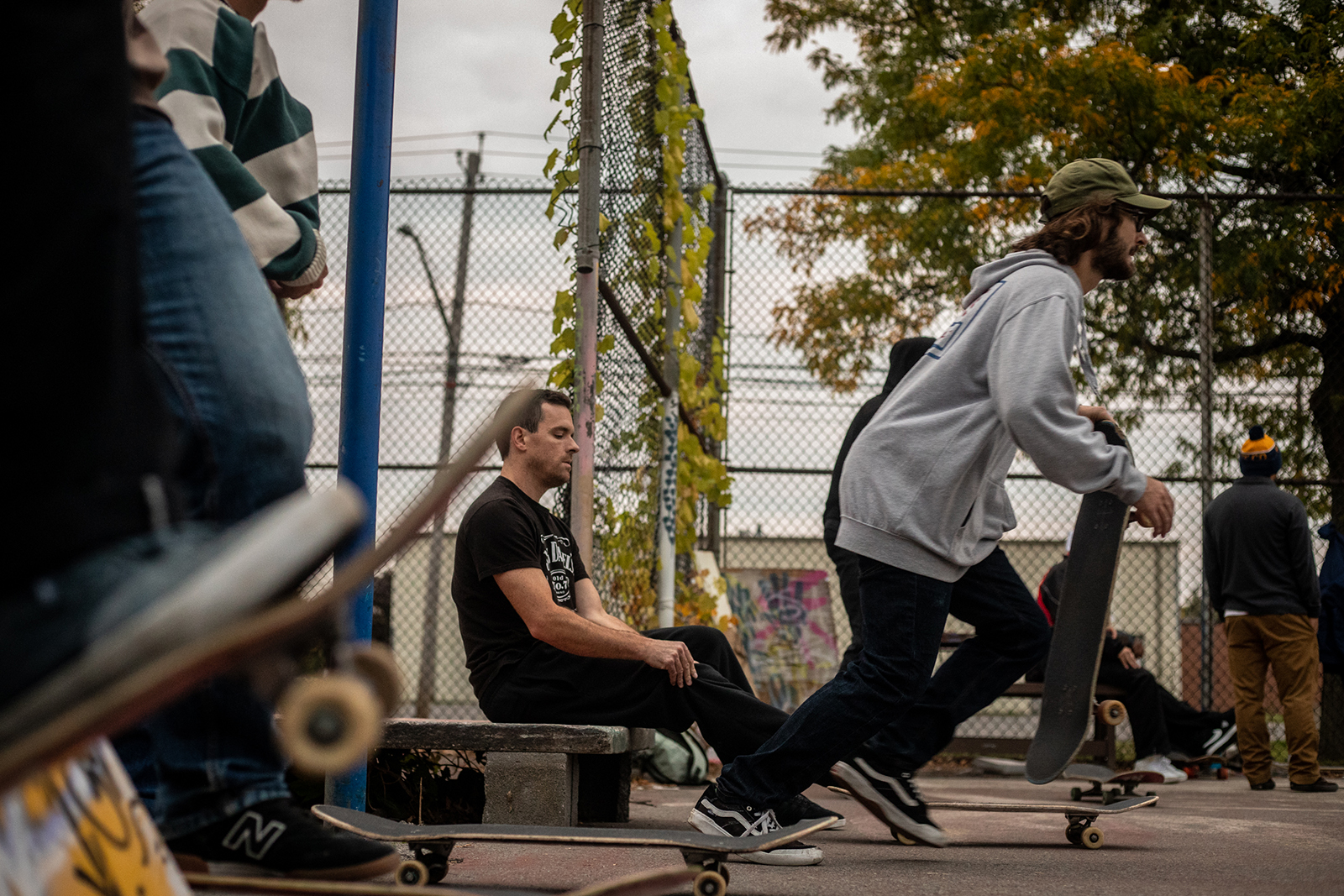
Mason Donovan, a student at the SUNY Environmental School of Forestry and skateboarder, runs into his “line,” the term used to describe when a skater performs a series of tricks in a row. A line also exists as a way to broadcast who you are to the greater skateboard world. Instead of filming for weeks on analog cameras and releasing videos on VHS and DVDs, skateboarders now can film a line in a day on their phones, edit it, and upload it to social media to be shared and critiqued. Photo by Gavin Liddell.
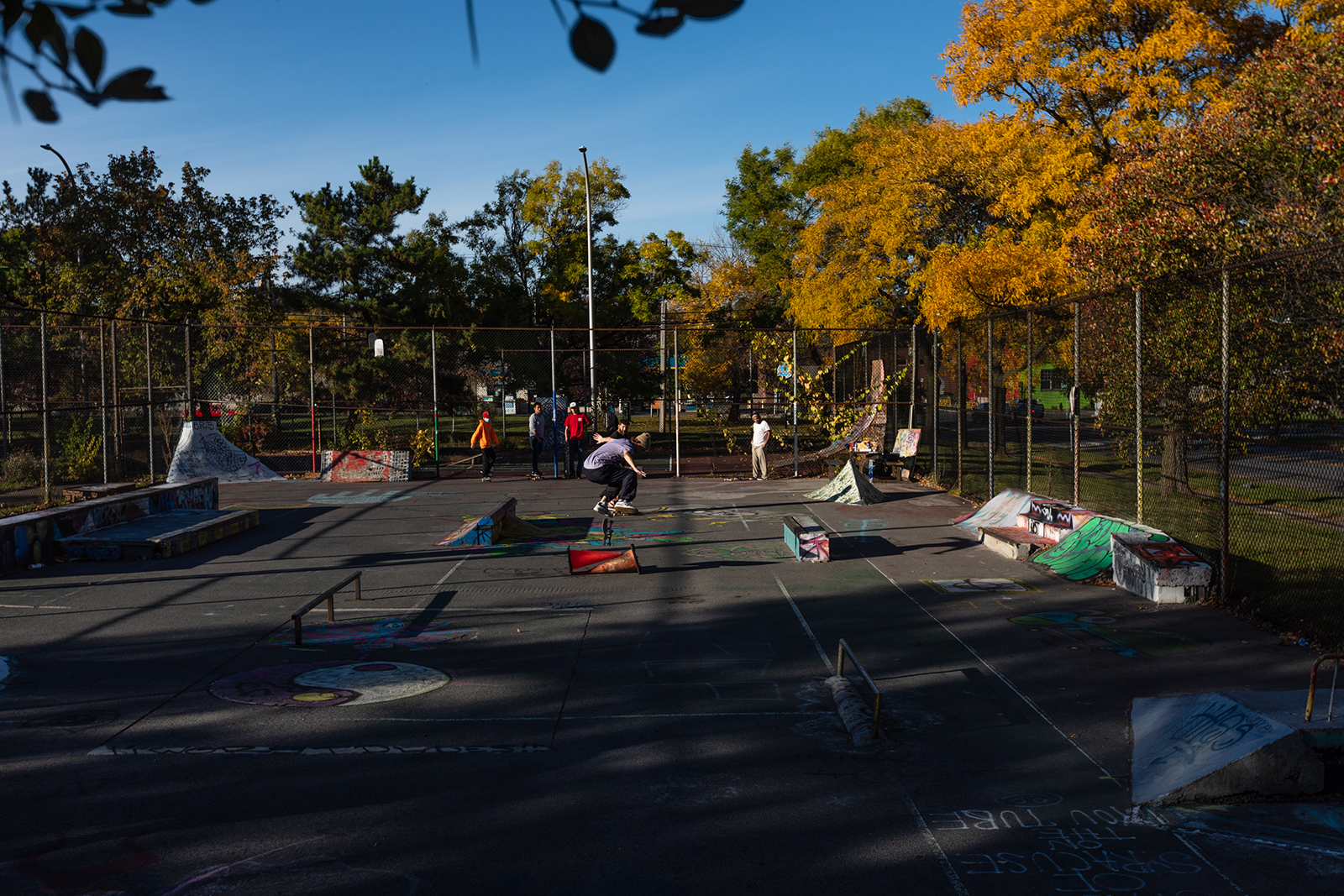
Orange construction cones serve multiple purposes at the park. Often they create obstacles to practice tricks or serve as makeshift tripods for filming iPhone clips. Skaters jam their phones into the cracked rubber at the top of the cone when no one can film their trick. Photo by Gavin Liddell.
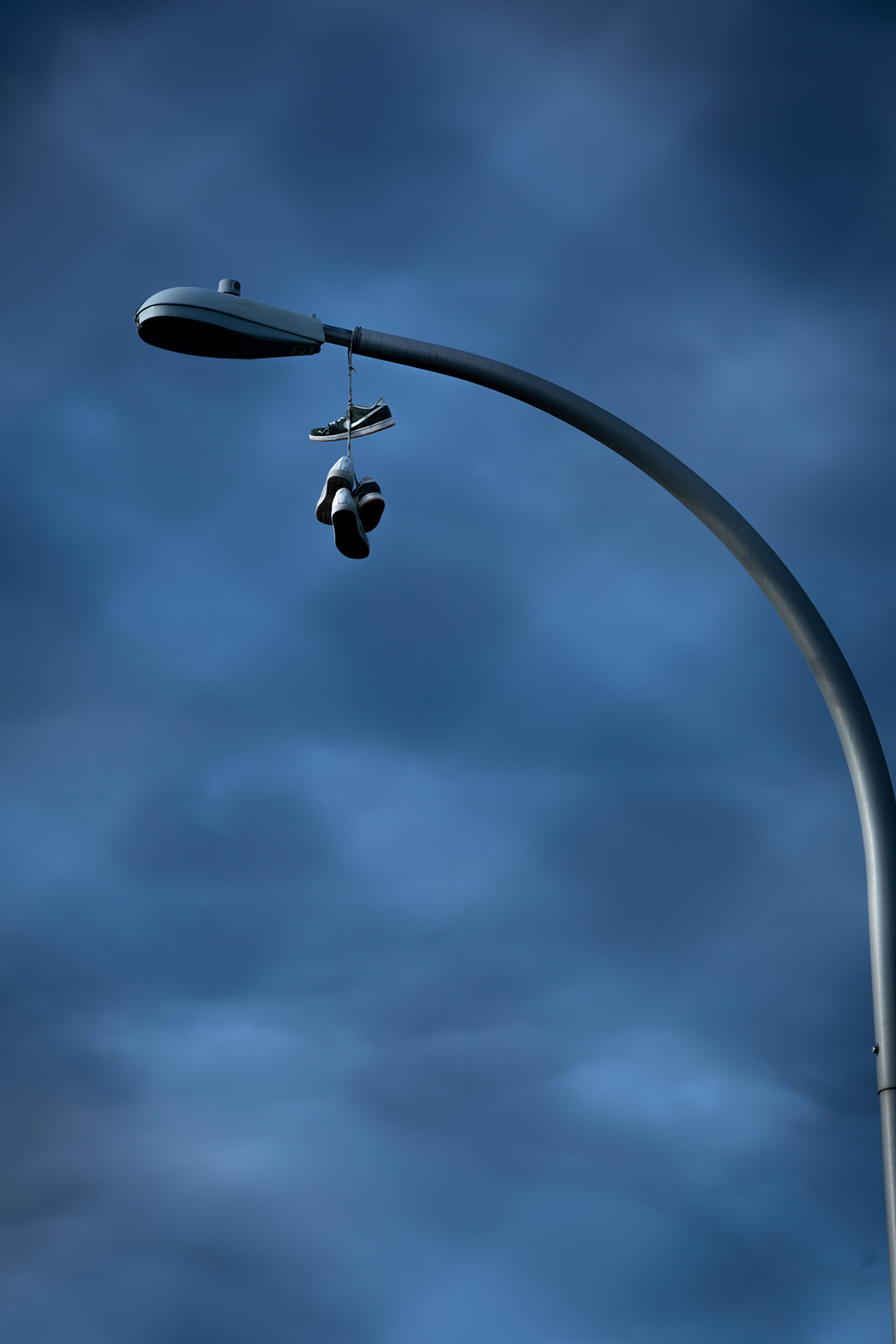
The Spot sits on the repurposed tennis courts of Ormond Spencer Park on the corner of Walnut and E. Washington streets in Syracuse and features several artistic touches, including a chain of sneakers. Photo by Gavin Liddell.
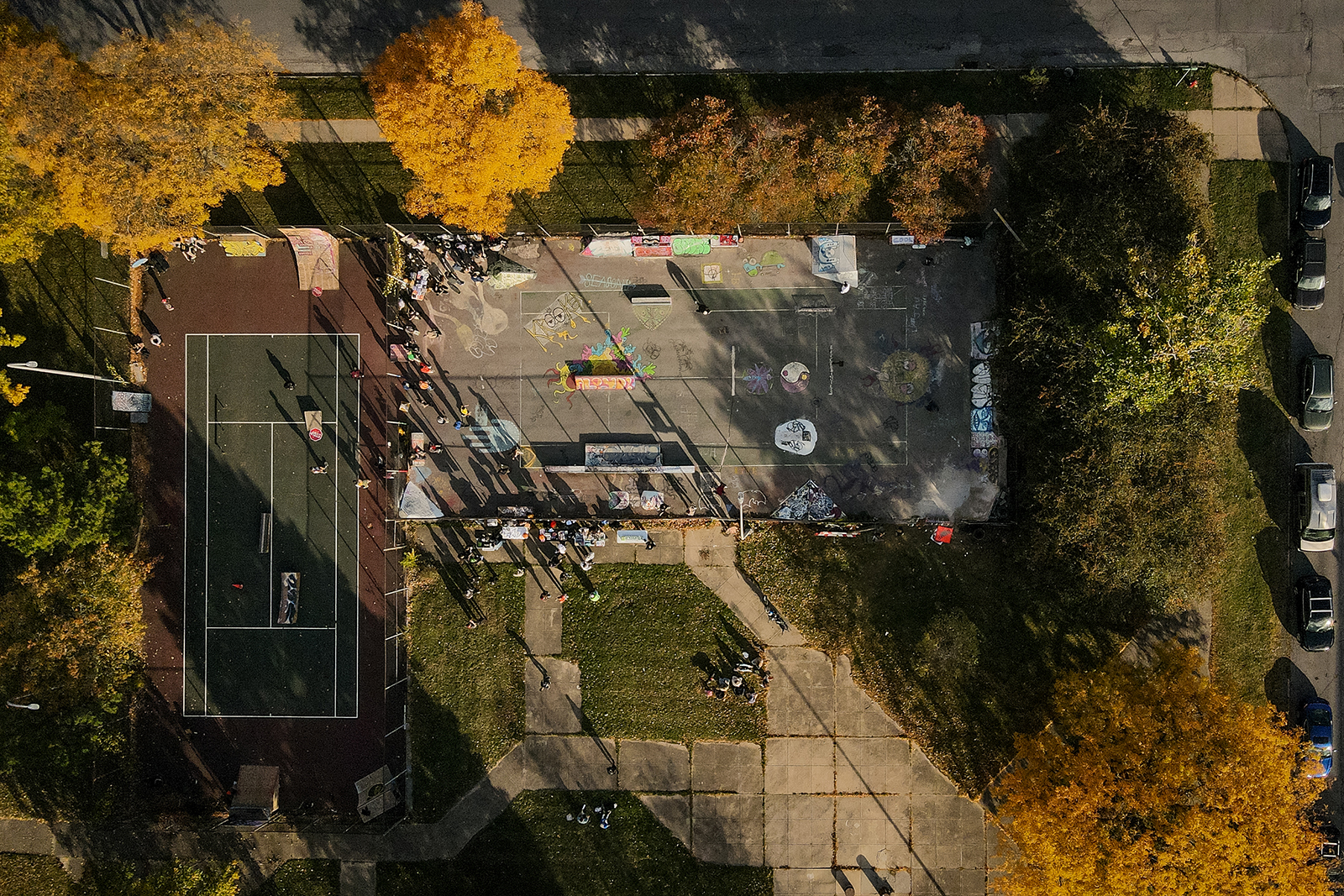
Aerial view of The Spot during the Fall 2020 Skate Jam. Photo by Gavin Liddell.
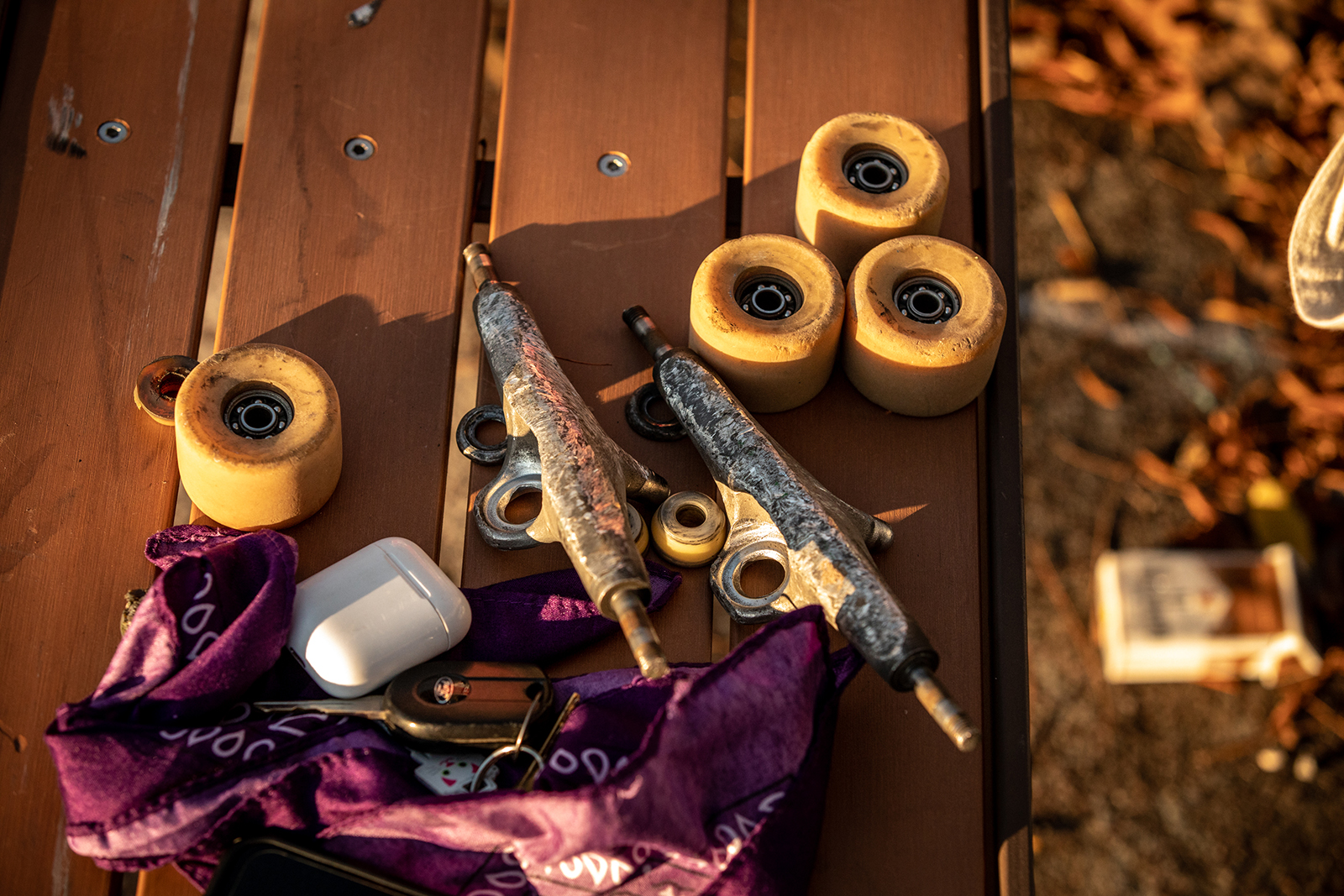
Like everywhere during the time of Covid-19, The Spot community experienced ups and downs as they navigated restrictions created by the pandemic. Early in the Fall of 2020 when cases were low, members of Syracuse’s skate community seemed rather unphased by the threat of the virus. When Covid-19 hit Syracuse and lockdowns went into effect, the skateboarders saw it as a setback but not one that would halt their boards. For a while, the city police monitored local skateparks to prevent contact between skaters, but soon the skateboarders repopulated The Spot, arguing that skateboarding served as one of the few athletic activities they could do while socially distanced and wearing masks often fashioned from bandana such as the one here. The importance of community in the sport and at The Spot made social distancing a challenge. In early November of 2020, The Spot experienced its first Covid-19 case. One of the locals tested positive just hours after skating at the park. The positive test changed the mindset of the community. The next day, the spot was quiet. Some skaters brought chairs and sat outside the fence watching and taking turns skating the park. Others stayed home. For a while, The Spot stayed quiet, and winter arrived shortly after. The Spot remained frozen and inactive until late March 2021. Photo by Gavin Liddell.
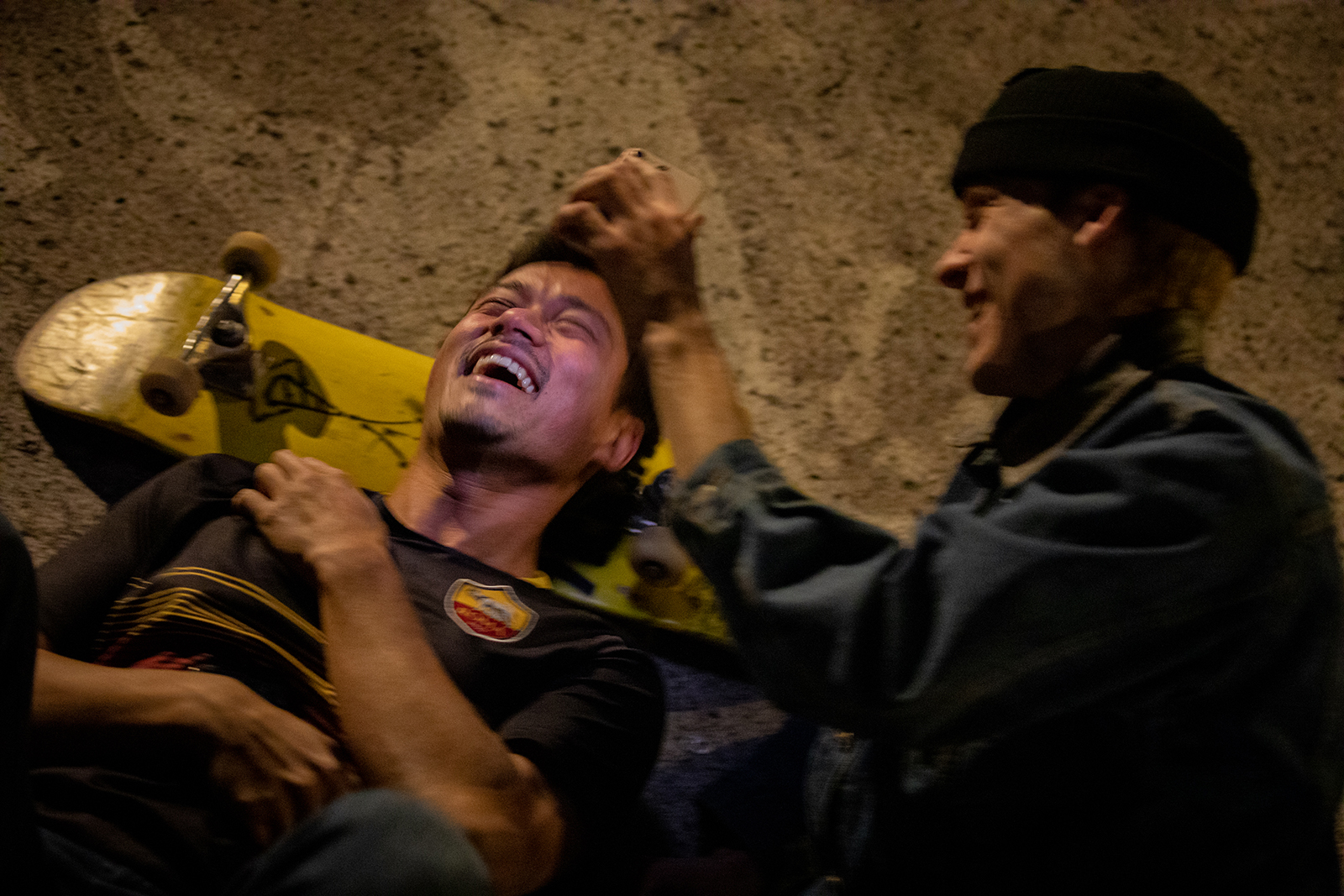
Skateboarding served as a common force that connected and fueled the friendship of Cris Moore and Ryan Mills. “We all met skateboarding. I started skating The Spot when I was about 15 years old,” Mills says. “The best part about The Spot is how I met and became close with my friends today there.” The two friends are a few years apart in age but have spent years of time together skateboarding Upstate New York. “There has been an ongoing joke that The Spot is Syracuse’s best and cheapest dive bar,” Moore says. “We do our part to make sure the younger generation is not around any of this, but it does slip through the cracks.” Photo by Gavin Liddell.
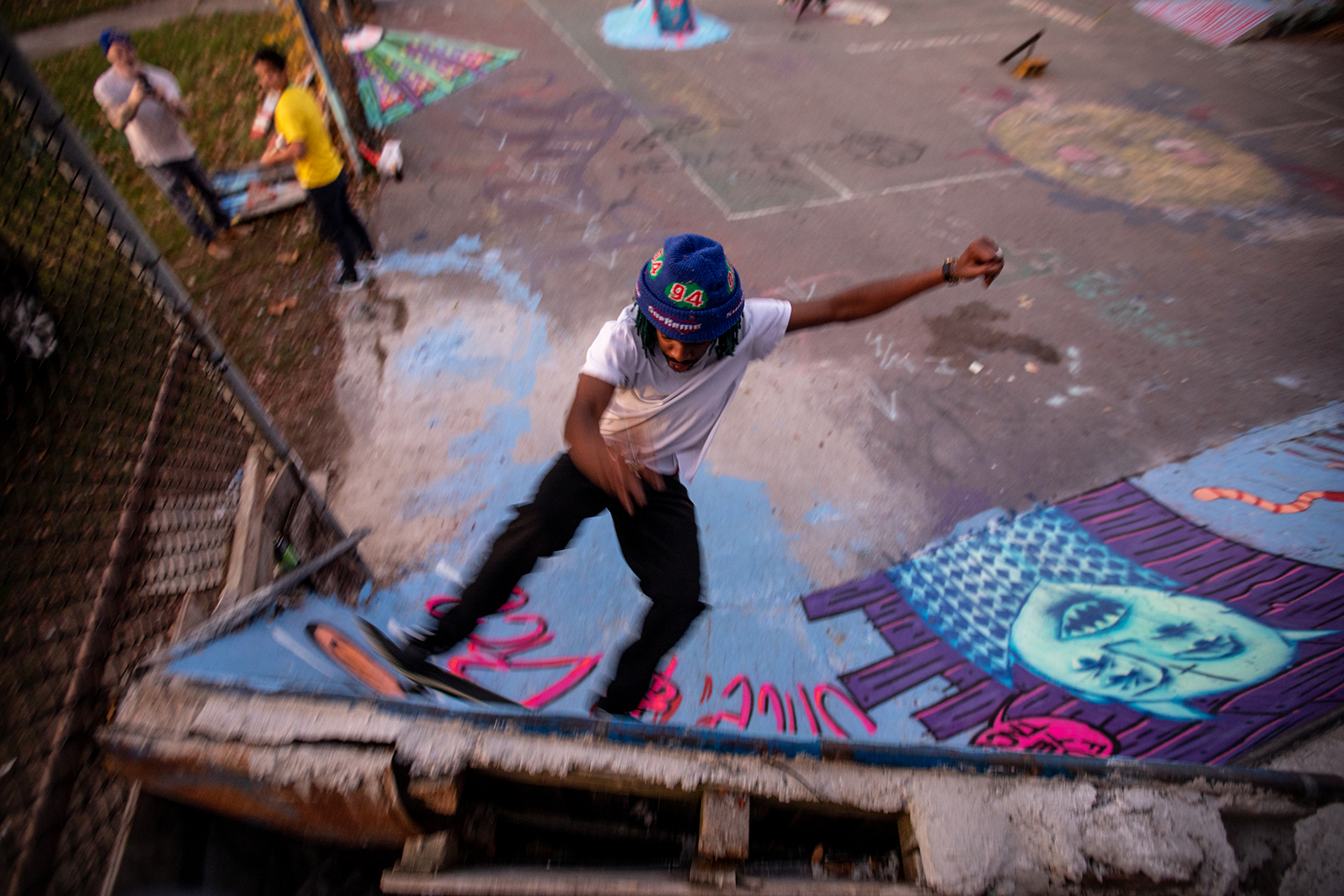
Alton Lawson rides one of the newest additions to The Spot — the cement vert wall is constructed out of tires, chairs, broken pallets of wood, chain link fence, quick dry cement, and garbage. It lacks the smoothness of ramps in other skateparks, and it is extremely difficult to ride. But custom built and shaped by hand over multiple days, the ramp, like The Spot, possesses a personality of its own. Tom Wardthird (at top left, holding camera) constantly paints the ramps with new designs. When he is not painting, he is filming and editing homemade skate films. Since making this image, the ramp art has seen multiple redesigns. Photo by Gavin Liddell.
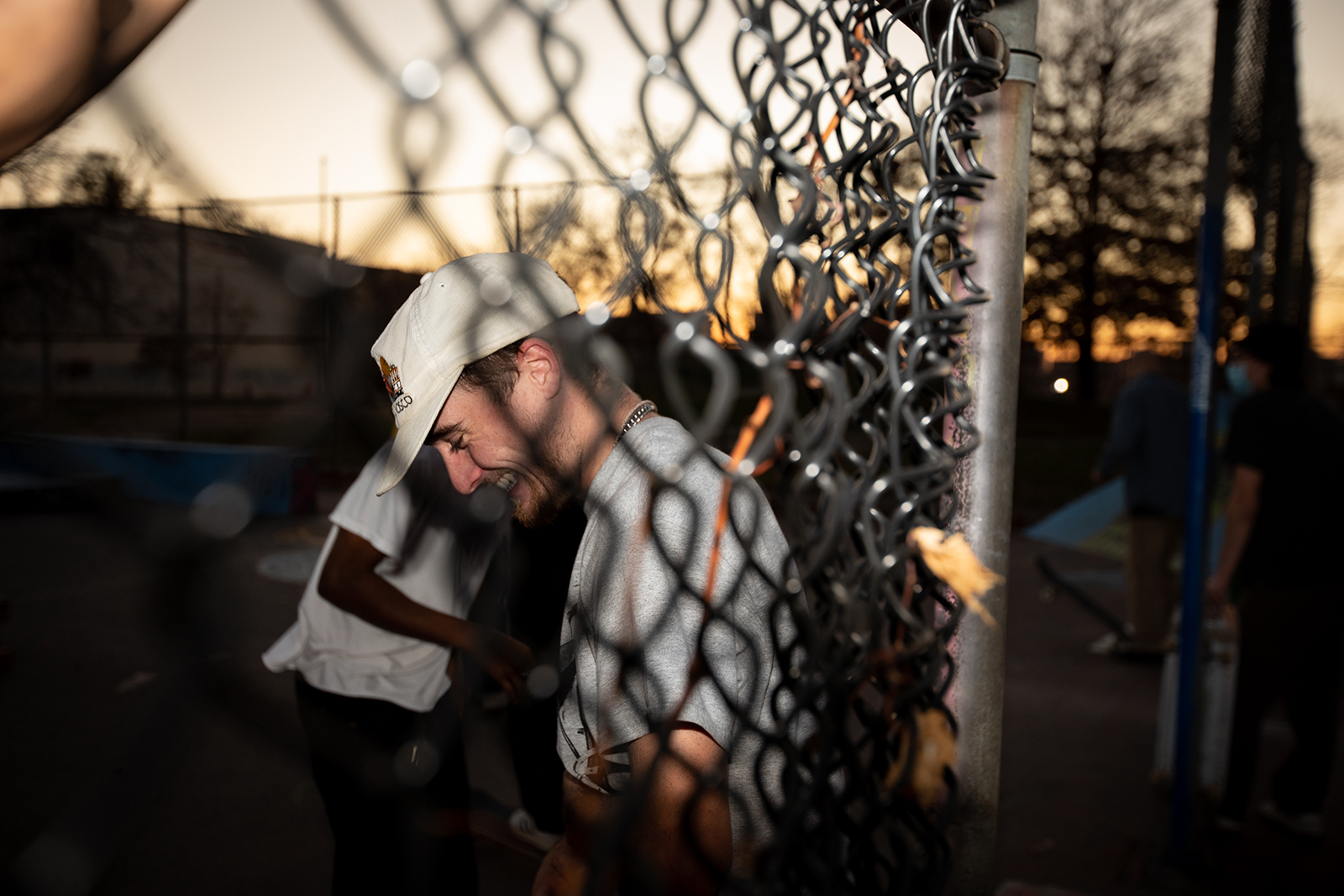
“The Spot is my favorite place to skate,” says local skateboarder Tom Wardthird. “All the kids, old and young, are what makes that place magic. We all chipped in money and labor to build it. We love sharing it with travelers and new people who move here.” Photo by Gavin Liddell.
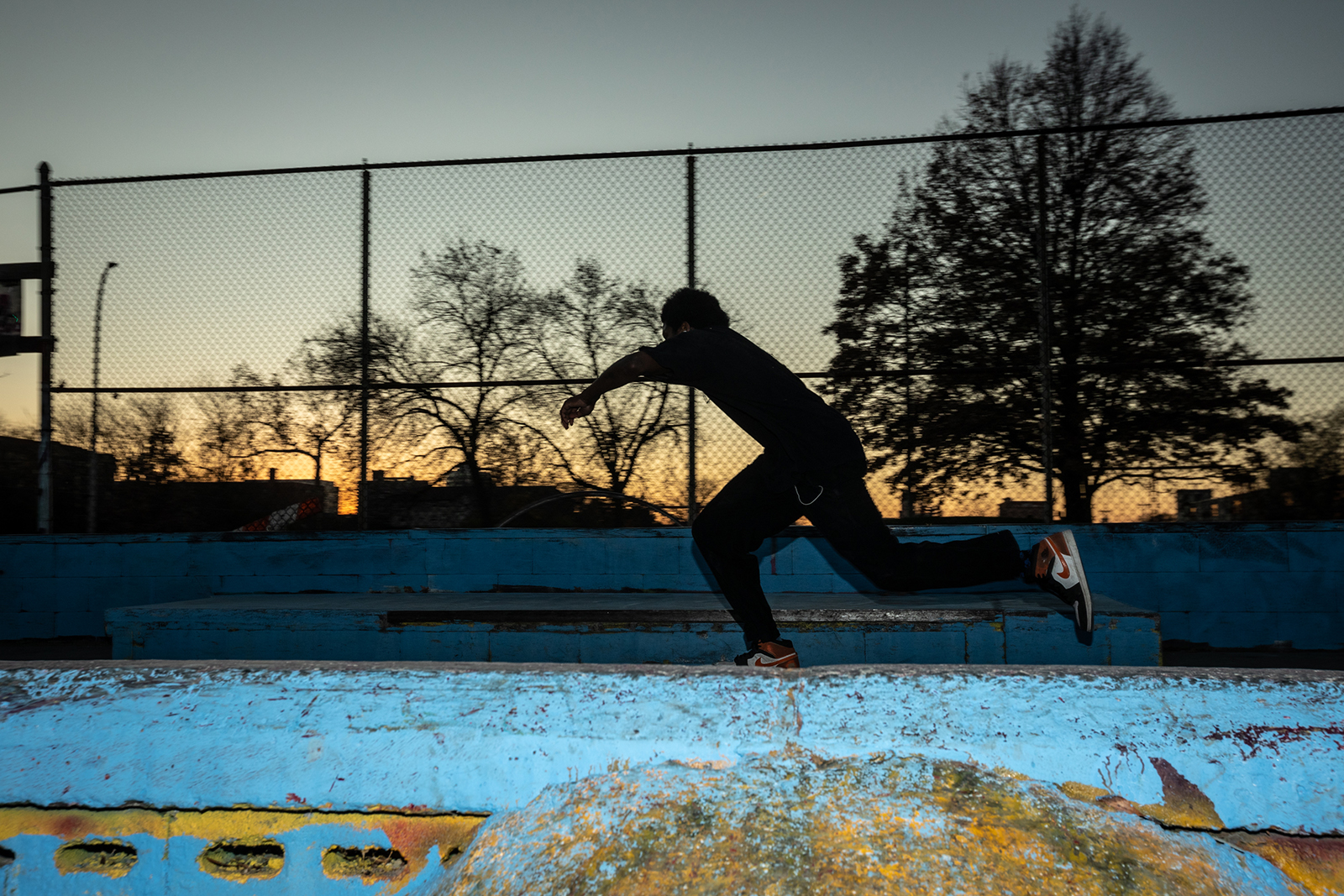
Sinceyer Smith pushes across the park towards the wall of quarter pipes that borders the south side of The Spot. Smith is one of the younger skateboarders in the Syracuse skateboard community. His style of skateboarding reflects his youth, falling somewhere between chaotic and controlled. A day after I met Smith for the first time, a video clip appeared on my Instagram feed of him on Thrasher Magazine’s Hall of Meat, a social media page that broadcasts the most insane and painful crashes, bails, and slams by skateboarders daily. The clip shows Smith riding his skateboard behind a car, holding on to the open right rear passenger window as the car pulls him down the street. Shortly after the video starts, Smith loses his board and begins to hang off the car with his feet dragging the ground behind the small sedan at around 30 mph. Smith wears an ear-to-ear smile, and then one of the passengers in the car says, “That’s a cop behind us, man. That is a cop. You have to run.” The car slows. Smith makes a leap for it. On his second step, another car in the second lane of traffic strikes him. The video ends with Smith flipping head over heels over the hood of a white sedan. A day after seeing that video, I found Smith back at The Spot and counting the event as a positive as it earned him internet fame for the day and a few hundred followers on his Instagram. Ryan Mills, another local skateboarder, describes Smith as being “used to the crust, an expression that refers to the grit, grime, bumps, bruises, and pain that comes with skateboarding. As in: Smith grew up skating “The Crust.” He is accustomed to “The Crust.” His style is “The Crust.” Photo by Gavin Liddell.
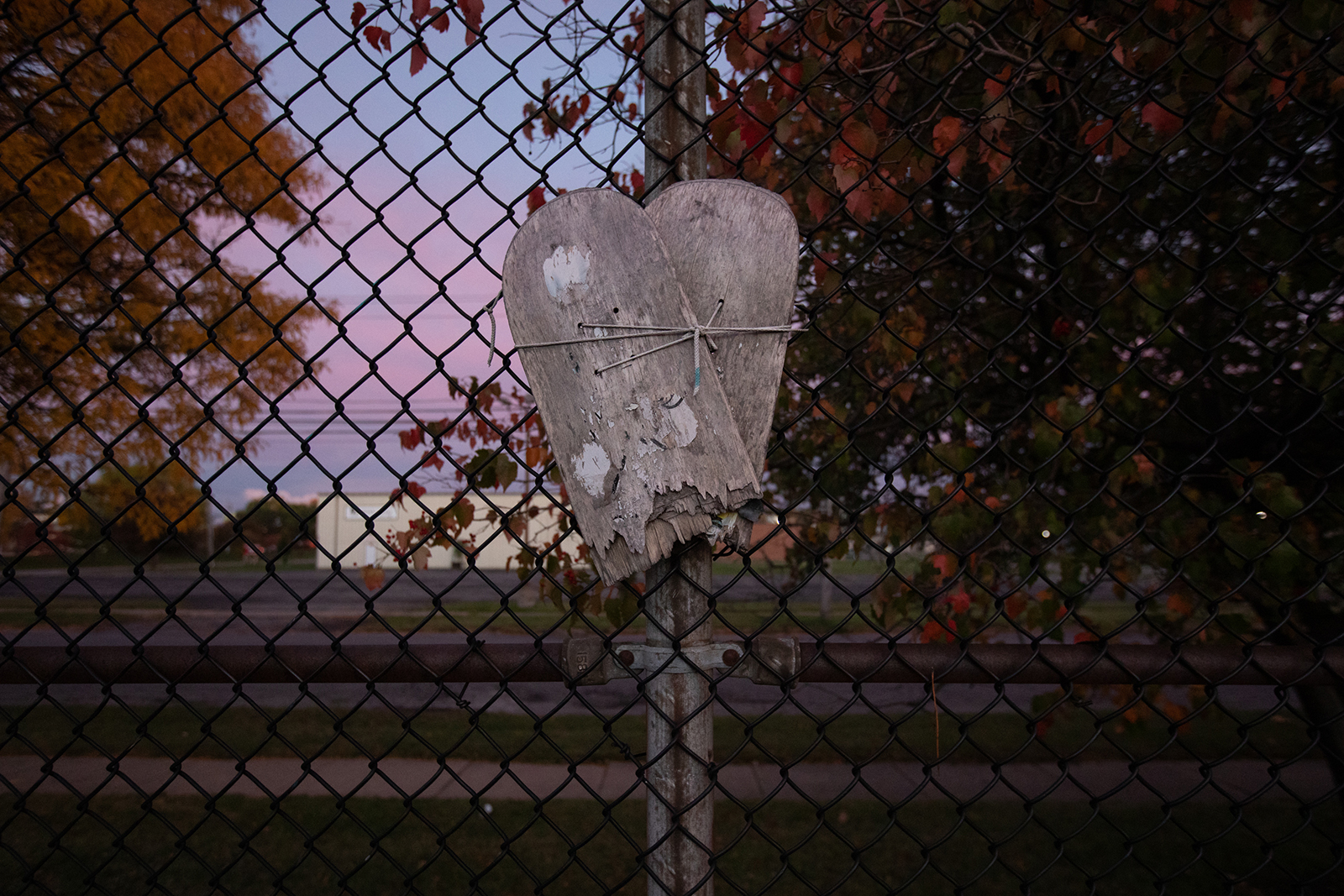
With little to no financial support from the City of Syracuse, The Spot survives through the recycling of old materials. New features appear when old ones break or fall apart. When something becomes un-skateable, the community finds a new way to skate it or use the rubble and scrap to fill another ramp. The park breathes thanks to that shared tending to the space and the creativity it invites, building a community fueled by more than movement on a strip of wood on wheels. Photo by Gavin Liddell.
Our pursuit of outdoor joy is remiss without the acknowledgement of the occupation of unceded Indigenous land. We are students and journalists working, writing, and living on the land of the Haudenosaunee Confederacy, comprising the Six Nations made up of the Mohawk, Onondaga, Oneida, Cayuga, Seneca, and Tuscarora nations. However, acknowledgement is not enough. Read More.